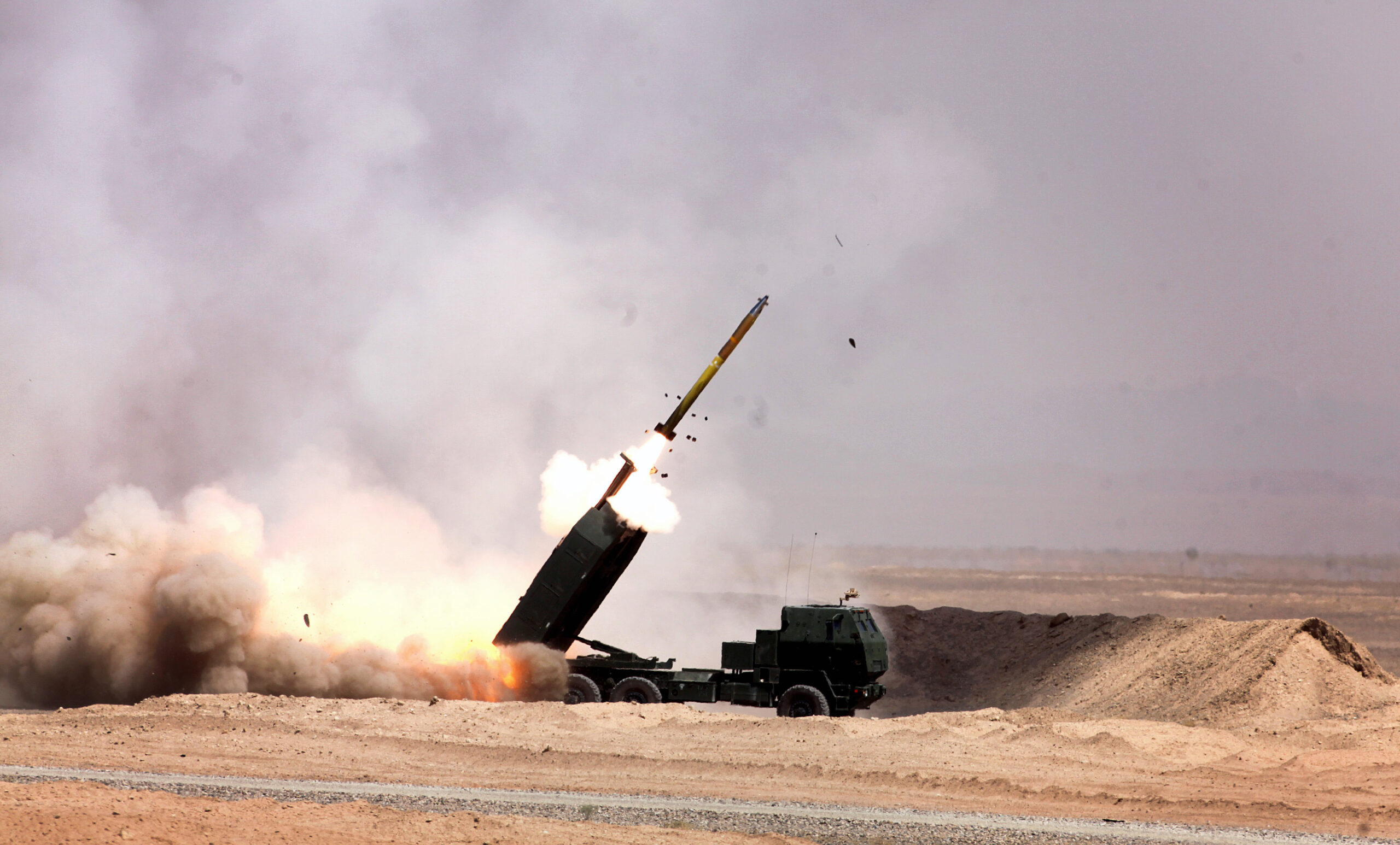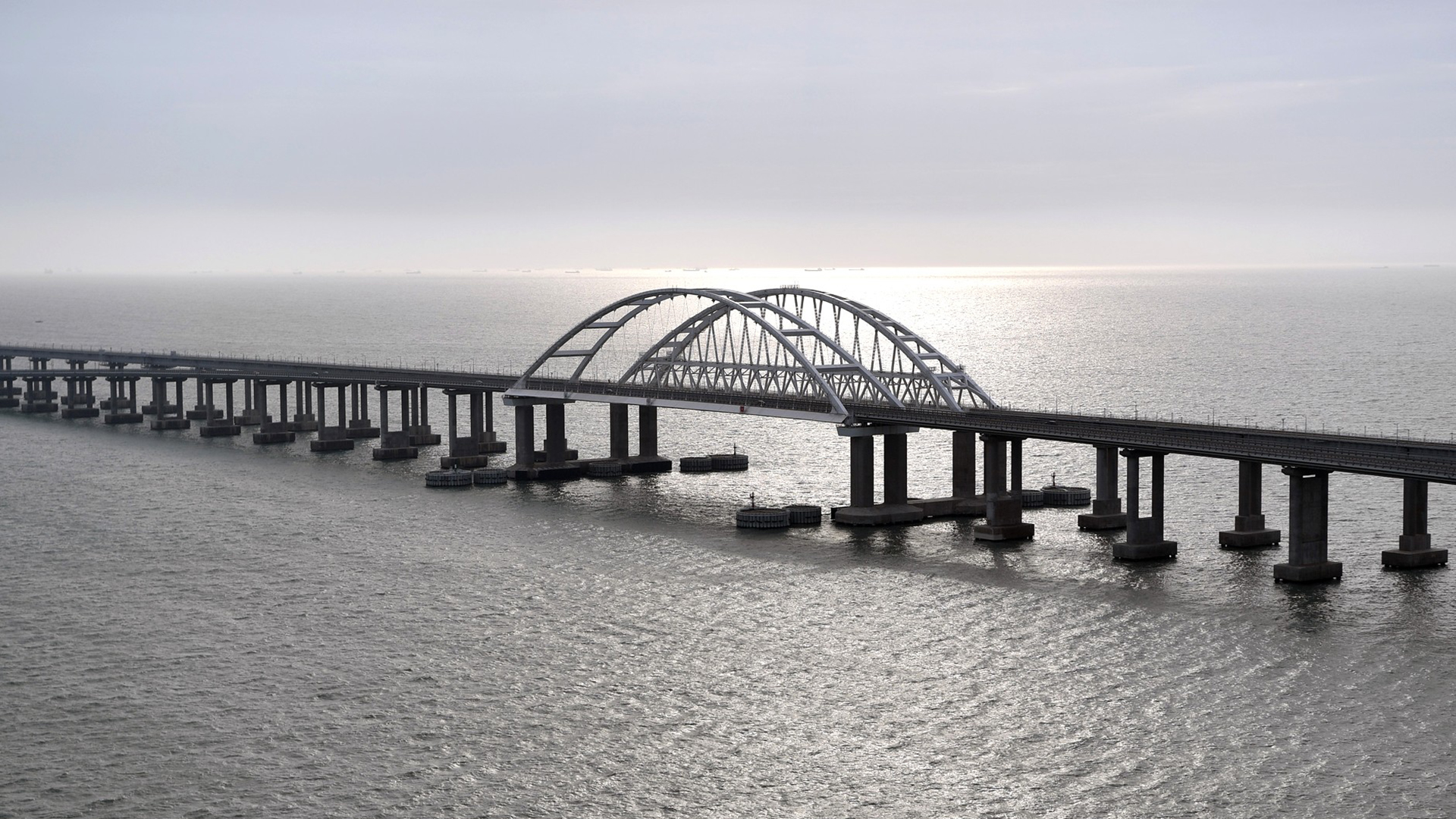Days after Russian forces were spotted preparing the Kerch Strait Bridge — which connects mainland Russia to Crimea — for missile attacks, statements made by U.S. defense officials signaled that the prized piece of Russian infrastructure is a fair target in their minds. The acknowledgment, however, doesn’t change the fact that the Ukrainian military still doesn’t possess a weapon with a range long enough to strike the bridge from within unoccupied territory.
At a press briefing held this morning, The War Zone asked a senior U.S. official whether or not there were any preclusions about the use of High Mobility Artillery Rocket Systems, or HIMARS, in Ukraine against certain targets. Speaking to reporters on the condition of anonymity, the official responded by saying that they couldn’t reveal any further information about specific targets, but that “Russian forces’ capabilities and logistics nodes within Ukraine are absolutely fair targets.” The War Zone followed up, asking if there were any hesitations about using the HIMARs against the Kerch Bridge. The official responded as follows.
“As I said, there aren’t any preclusions that I’m aware of on Ukrainians fighting on their sovereign territory against Russia.”

In so many words, the response suggests that carrying out such an attack with U.S. weaponry would be up to the discretion of the Ukrainian Armed Forces currently defending the country from Russian invaders. As such, if a standoff missile attack were to be launched from Ukrainian waters or soil and strike the Kerch Bridge, it seems clear the United States wouldn’t object. Remember, Russia seized Crimea from Ukraine in 2014 and the U.S. does not recognize it as belonging to Russia. However, as strategic and symbolic as striking the Kerch Bridge would be, Ukraine simply doesn’t have the right arsenal for that at present. What they do have, though, seems to be having an effect on the Russian military nonetheless.
Earlier this week, The War Zone reported on the recent developments occurring at the Kerch Bridge, which cost $3.5 billion to build, noting that Russian forces had been seen both deploying decoy barges with radar reflectors and carrying out smokescreen tests to shroud the bridge. You can read more about that here, as the article also breaks down how even the most long-range missile systems currently in Ukraine’s possession wouldn’t come close to reaching Kerch Bridge from inside Ukrainian-controlled territory.

For example, RGM-84 Harpoons aren’t even made primarily for land-attack operations and lack the range needed for such an attack — unless they are fired from inside Russian-occupied territory or from out in the Black Sea. HIMARS offers an even more limiting range, but it is capable of pinpoint attacks against high-value land targets. Both systems are not known for their warhead size — the Harpoon carries roughly a 500-pound warhead while HIMARS’ M31 rocket carries one less than half that size.
Either way, they would have to target weak points in the bridge with high accuracy, and likely be used in significant numbers, in order to severely damage the bridge. Still, even a highly symbolic strike would send a message and could temporarily impede the military and economic supply shipments that travel across Kerch Bridge to and from Russia and Crimea.
Despite their long-range shortcomings, HIMARS and Harpoons do still provide Ukrainian forces with much-needed firepower. In fact, a $400 million weapons package signed by President Joe Biden today will enable the delivery of an additional four HIMARS to Ukraine, bringing the total amount of systems provided by the United States to 12. However, the anonymous U.S. official did warn of the dangers of potential escalation if Ukraine is to use these weapons to strike deep within Russia. This same concern has prevented Biden from transferring longer-range HIMARS-capable munitions to Ukraine — the U.S. Army’s Army Tactical Missile System (ATACMS) being the only weapon in that class.

The short-range ballistic missile can travel 190 miles and strikes at high speed with its 500-pound penetrator warhead. ATACMS would be capable of reaching the bridge and delivering a powerful blow, but still, bridges are hard targets to strike and damage catastrophically. Usually, they are targets set aside for more powerful 2,000-pound class weapons. In absence of that, ATACMS could still spell trouble for the span, if the missile was offered to Ukraine. U.S. Sen. Richard Blumenthal (D-Conn) has expressed interest in providing Ukrainian forces with longer-range systems like the ATACMS, however only under the condition they aren’t used to attack Russian territory.
The steady stream of ever more advanced standoff weaponry flowing into Ukraine and statements made by Ukrainian Major General Dmytro Marchenko claiming that the Kerch Bridge is the country’s “number one target,” along with other intelligence (or paranoia) have prompted Russia to start preparing for the worst.
An attack on Kerch Bridge may not be carried out anytime soon, especially with the limited capabilities Ukrainian forces have at their disposal, but the U.S. official’s statement certainly confirms that it won’t be ruled out.
Contact the author: Emma@thewarzone.com
